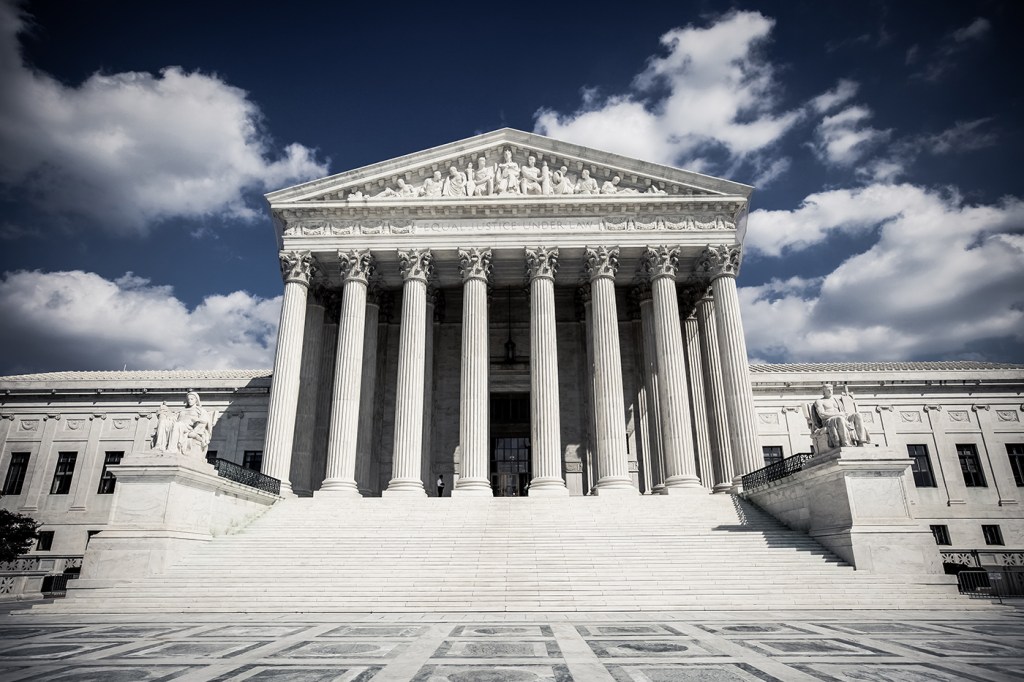The Supreme Court under a Trump presidency

Donald J. Trump will enter the White House with a substantial to-do list. One of the most significant items is to nominate a justice to replace the late Justice Antonin Scalia, who died in February.
How else may a Trump presidency shape the nation’s highest court? We asked two faculty experts—Michael Meltsner, George J. and Kathleen Waters Matthews Distinguished University Professor of Law, and Dan Urman, assistant teaching professor and director of the law and public policy minor who teaches the course “Understanding the Modern Supreme Court,” to examine Trump’s potential appointees and whether a profound shift in the court’s ideological makeup is ahead.
We now can assume that the next Supreme Court nomination will come from President-elect Donald Trump. What do we know about who, or the type of justice, Trump is likely to nominate?
Meltsner: Trump has published a long list of candidates. They range from the conservative to the arch conservative. Of course, there is no guarantee he will pick someone on the list.
Urman: Donald Trump has released two lists of Supreme Court justices this year. Both are, at first glance, in the conservative mold of Justice Antonin Scalia. In some ways, they represent “more of the same”: most are sitting judges, and several clerked for the U.S. Supreme Court themselves, just like current Justices Breyer, Kagan, and Roberts. He released his first list in May, and it included eight white males out of the 11 individuals on the list. Perhaps in response to the lack of diversity, he released another list in September, and it included a South Asian and Hispanic judge. I would be very surprised if Trump nominated a judge that lacks the full approval of the Federalist Society for Law and Public Policy Studies, a conservative/libertarian legal organization.
Even one appointment changes the dynamics of the nine justices. The court has been dominated by conservative jurists since the 1970s. Trump’s appointment(s) will make it more so.
— Michael Meltsner, George J. and Kathleen Waters Matthews Distinguished University Professor of Law
The appointment of a conservative justice to the vacant seat would likely restore a close ideological balance in the court. But, many of the court’s more liberal members are also its oldest. Do you anticipate a profound shift in the court’s ideological makeup during a Trump presidency?
Meltsner: Even one appointment changes the dynamics of the nine justices. The court has been dominated by conservative jurists since the 1970s. Trump’s appointment(s) will make it more so.
Urman: I do anticipate a shift. Senate Republicans held up President Obama’s nominee to replace Scalia, Merrick Garland. Garland, a moderate pick who would probably have become a “swing justice,” will never be on the court. Now, President Trump is free to nominate a justice to replace Scalia, and with a majority of Republicans in the U.S. Senate, if Democratic senators “obstruct,” the Republican Senate majority can rewrite the Senate rules to eliminate the filibuster—the so-called “Nuclear Option” for Supreme Court nominations.
President Bill Clinton nominated two of the oldest three current justices on the court: Ruth Bader Ginsburg, 83, and Stephen Breyer, 78, and they are reliable “liberal” votes on major issues of importance to legal liberals. Justice Anthony Kennedy is 80, and although Ronald Reagan nominated him, he has been “liberal” on LGBT rights, even penning the 2015 decision that guaranteed marriage equality across the nation (Obergefell v. Hodges).
President Trump will immediately shift the balance from what Garland would have done, and bring it back to the way the court stood before Scalia died. Then, if any of these three justices mentioned above retire or die, he will be able to shift the “center” of the court by one justice, and that would make Chief Justice John Roberts, no liberal, the new “swing justice.”
It is hard to know exactly which cases will make it to the court, but I imagine that they will include the limits of executive power, women’s health and privacy, affirmative action in public institutions, the balance between religious freedom and individual rights, and the death penalty.
— Dan Urman, assistant teaching professor and director of the law and public policy minor
What are the key constitutional issues likely to go before the court in the near future?
Meltsner: Immigration, abortion, race relations, voting rights, and police conduct, as well as legal issues that arise from the behavior of corporate America.
Urman: The justices determine what cases they hear through the “certiorari” process, and four justices vote to hear a case. It is hard to know exactly which cases will make it to the court, but I imagine that they will include the limits of executive power, women’s health and privacy, affirmative action in public institutions, the balance between religious freedom and individual rights, and the death penalty.
In addition to Supreme Court nominations, the president also appoints federal judges. What are the implications of a Trump presidency on the lower courts?
Meltsner: The filibuster will return as a feature of Washington political life.
Urman: President Obama leaves a legacy of an incredibly diverse judiciary. He appointed more judges who are female, LGBT, and from historically underrepresented groups to the federal bench than ever before. It is hard to imagine Trump nominating a judiciary looking anything like this, and he will appoint “law and order” justices who are more pro-government in criminal cases, anti-individual in employment cases, and so on. While lower court judges must follow Supreme Court rulings from “above,” there is enough “wiggle room” or crevices in the law for them to leave their own stamp on it.





